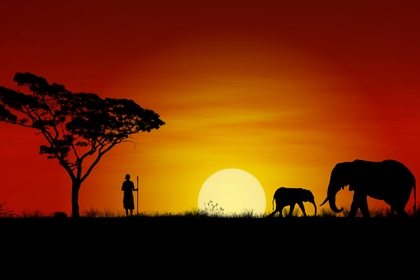As we approach the second half of the year, we leave behind some impact not only on the lives of people around us but also on the creatures that we swore to protect from extinction. The scientist believes that we are currently in the sixth mass extinction phase. The previous five were all caused by natural reasons, but the current period is entirely linked to humans.

And while humanity waits for the year to end with a bang, the existence of many animals remains highly questionable. Shockingly, more than half of such endangered species remain on the brink of extinction due to human reasons alone. Let’s take a look at some of our buddies we might never see again after the year ends.
Let’s take a look at some of our buddies we might never see again after the year ends.
1. Hawaiian Monk Seal
The seals nearly vanished in the early 20th century. They were declared endangered in 1976. Despite this, there are only 1,200 remaining and the threat of marine debris, beach erosion, and food shortages are still a major concern.
2. South China Tiger
The South China’s tiger population in 1996 was less than 100. Scientists consider the animal to be functionally extinct, a title that may change to simply extinct in 2016. These cats, affected by hunting, haven’t been seen in the wild for almost 30 years.
https://www.youtube.com/watch?v=mD9XnM1V17k
3. Vaquitas
It is the rarest marine mammal in the water. Found in 1958 and it’s already facing extinction as early as 2016. Experts predict that 2016 may be its last year. Half have already been lost. They often fall prey to illegal fishing around the Gulf of California, the animal’s only native habitat. Vaquitas are up to 5 feet long and weigh up to 120 pounds.
4. Giraffes
Stunned to find this animal on the list? There were over 140,000 wild giraffes in 1999; now there are less than 80,000 – a 43% decline in less than 15 years. Poachers, climate change, and loss of agriculture are all responsible for the decline in numbers.
5. Hawksbill Sea Turtle
In less than ten years, the population of Hawksbill sea turtles fell by 80%, depleted by years of poaching and beach developments. Despite the decline, it looks like things might become stable as poaching has decreased by 80% due to a crackdown by local authorities in the Caribbean.
6. Mountain Gorilla
300 Mountain Gorillas roam in the wild today. They face the risk of hunting and conflict between rival factions. Over a quarter of wild Mountain Gorillas lives in Virunga where their turbulent relations with people, including the ever looming threat of oil drilling is a real cause for concern.
https://www.youtube.com/watch?v=e-7WCyiOlSc
7. Northern Sportive Lemur
The northern sportive Lemur has lost 80% of its total population in under 20 years, leaving just 50 individuals to carry on the species. Its biggest threat is from illegal hunters who kill them for their meat mainly in Madagascar.
https://www.youtube.com/watch?v=-YSdrvpi6iE
8. Sumatran Elephant
According to the WWF, the Sumatran elephant has lost nearly 70 percent of its potential habitat since 1985; this has resulted in conflicts with local communities that result in relocation or death. Combined with the rise in ivory poaching and things are looking rather bleak for the endangered elephant.
9. Kakapo
Despite having the longest average lifespan of any bird – 90 years – the Kakapo is still among the rarest. The bird’s numbers have been reduced by hunting alone. Especially in New Zealand where only 125 of them remain today.
https://www.youtube.com/watch?v=Opv8vZ6RvB0
10. Giant Panda
China, which is home to the remaining wild population of fewer than 2,500 pandas, has since the late 1980s instituted more stringent habitat protections and poaching has all but ceased. Their status is still tenuous, though. They still suffer from the disease, occasional predators, and starvation when large swathes of the bamboo on which they feed complete its life cycle and dies.
https://www.youtube.com/watch?v=QEyQE-pqO7g
11. Northern White Rhinoceros
The one species that requires serious attention since only three are alive. The three – named Sudan, Najin, and Fatu – are the last of their kind. Scientists are working to improve their numbers by a controversial stem cell technique.
12. Amur Leopard
Found in the peripheries of China and Russia, their numbers are dwindling. Habitat destruction, poaching, and extreme weather conditions make it the rarest of all cat species with only 70 currently remaining. The future seems dim for these majestic leopards.
https://www.youtube.com/watch?v=OUO2K_qoucE
It’s a strange world to live in where we realize that humans are responsible for all that’s wrong with it. But if we don’t act quickly enough, it might be too late. The time to prevent was yesterday, the time to act is today.
Afraid of what’s happening to the world? Want the best saucy news about animals and nature? Then leave a comment, subscribe and share for more saucy content.